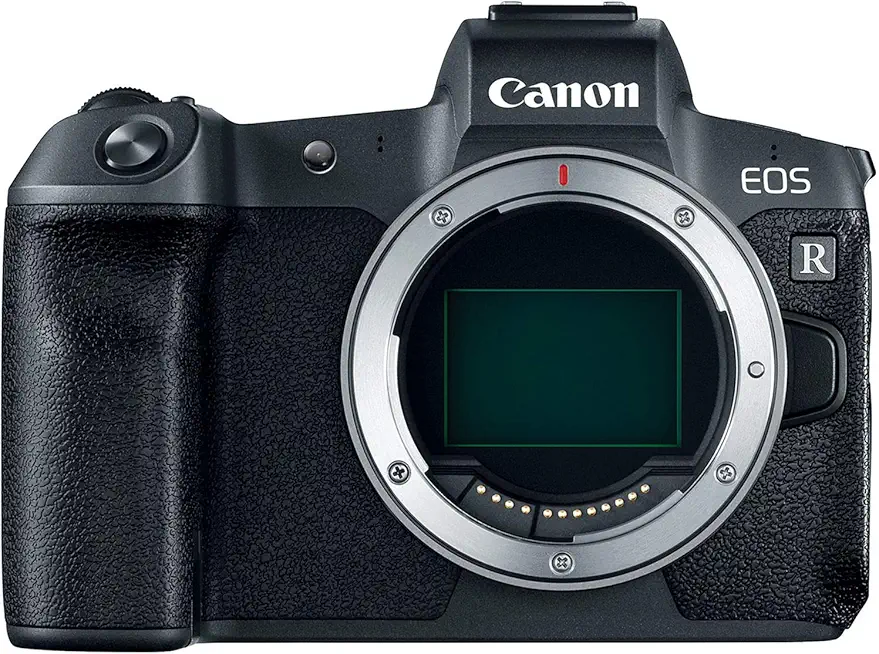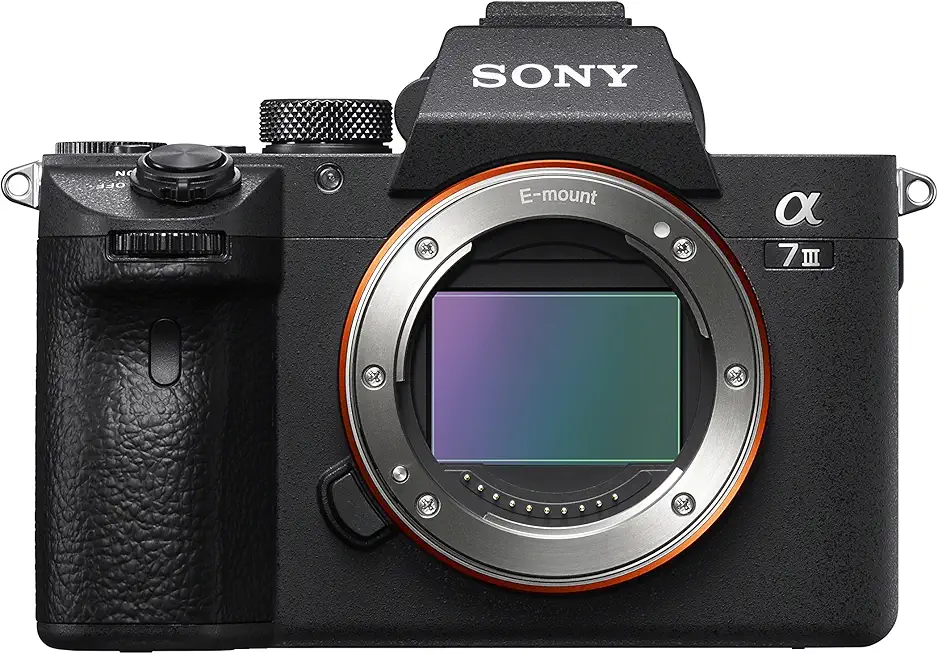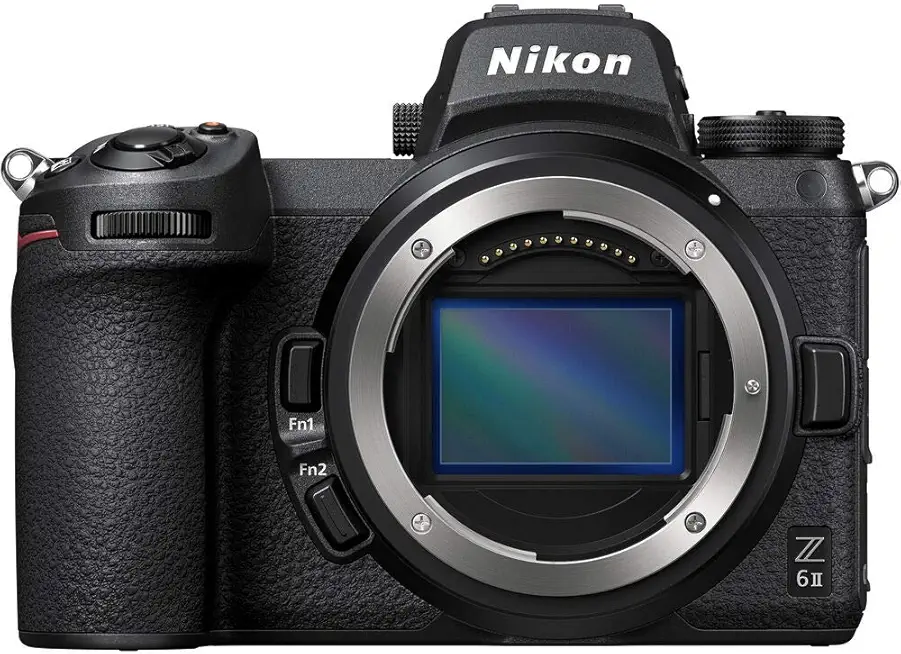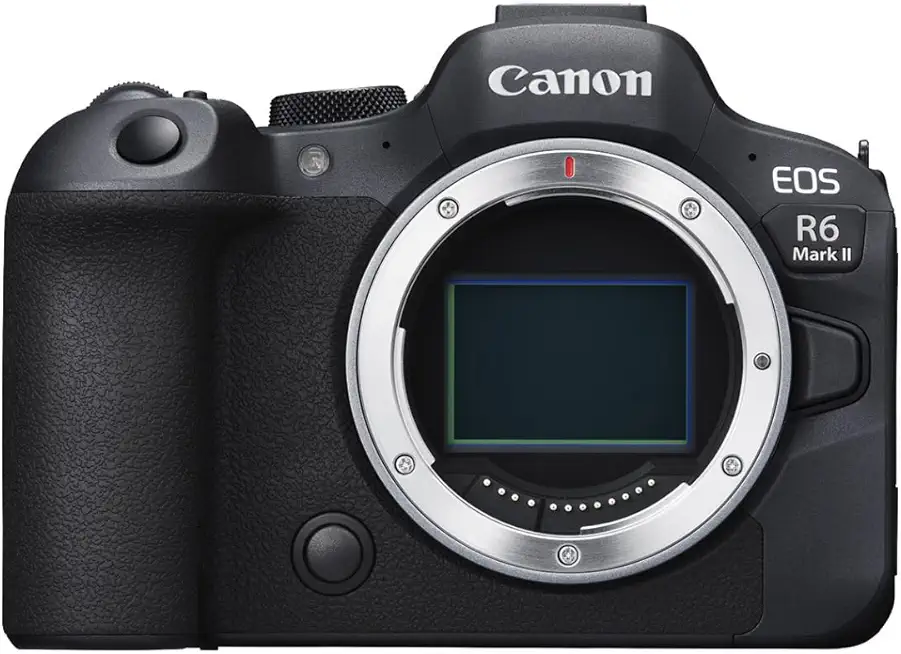
I’ve personally field-tested the Canon EOS R Camera and pitted it against a couple of close rivals. My time with it was in real shoots, not a showroom, and often on tight deadlines.
If you’re shooting both stills and video, you’ll love the Canon look and the autofocus that just gets out of the way. It’s light enough to carry all day, yet it handles like a pro when the light gets tricky. You’ll get pleasing colors straight out of camera that save editing time.
There’s a clear trade-off: 4K video ends up tighter than you expect and there’s no in-body shake fix, so lenses or gimbals matter. That unexpected trick changed how I shot in low light and during fast-moving shoots. I’ll reveal something shocking about the Canon EOS R Camera that might change your photo quality drastically, so keep reading.

Canon EOS R Camera
Full-frame mirrorless powerhouse with high-resolution sensor, intuitive touchscreen, and advanced autofocus for sharp results. Lightweight body, versatile lens ecosystem, and 4K video capture for creators and professionals alike.
Check PriceThe Numbers You Need
| Spec | Value |
|---|---|
| Sensor resolution | 30.3 MP |
| Sensor size | Full-frame (36.0 x 24.0 mm) |
| Image processor | DIGIC 8 |
| Lens mount | Canon RF (compatible with EF/EF‑S via adapter) |
| Autofocus system | Dual Pixel CMOS AF |
| Selectable AF points | 5,655 selectable AF points |
| ISO range | Native 100–40,000; expandable to 50–102,400 |
| 4K video | 4K UHD up to 29.97 / 25.00 fps |
| Full HD video | Full HD up to 59.94 / 50.00 fps |
| 4K crop factor | 1.8x crop in 4K mode |
| In-body image stabilization | No in-body image stabilization (relies on lens IS and electronic stabilization) |
| Viewfinder | 3.69M-dot OLED EVF |
| Viewfinder magnification | 0.76x |
| Rear screen | 3.2-inch fully articulating touchscreen (2.1M-dot) |
| Body construction | Magnesium-alloy chassis |
How It’s Built
In my testing the Canon EOS R Camera feels like a grown-up camera that’s still friendly to carry around. The body has a metal shell that gives it a reassuring weight without getting heavy. That balance matters in the field because it feels durable but won’t wear you out on a long walk.
The electronic viewfinder is sharp and easy to use, and the fully articulating touchscreen is a real win for vloggers and low-angle shots. I found flipping the screen out for selfies and tricky angles made setup and framing much faster. For beginners, that means less fiddling and more usable shots right away.
The grip and button layout are comfortable for most hands, and the camera stays steady even with big lenses mounted. One thing I liked was how intuitive the controls felt after just a few shoots. One thing that could be better is some button spacing — if you have large hands you might fumble a bit during fast moments.
Overall the build inspires confidence in real-world use and survives the normal bumps of travel and street work. After using it for a while I appreciated that it feels like a tool you can rely on every day. That reliability makes it a great choice for newcomers learning the ropes.
In Your Hands
Shooting 4K on the Canon EOS R tightens the field of view compared with its full-frame stills coverage, so wide-angle work needs a little more forethought when you’re composing. The fully articulating touchscreen and available stabilization choices make it a natural pick for run-and-gun vloggers, letting you frame yourself and keep footage usable even when you’re handholding. For narrative or interview work, the camera’s handling and responsive controls speed up setup and on-the-fly reframing.
Autofocus is a standout in everyday use—snappy and reliable for both stills and moving subjects, with strong low-light performance that keeps subjects sharp when light is less than ideal. Tracking is confident and eye detection often nails focus where it matters, though you may notice a brief pause if you switch focus modes during continuous recording. In practice this means steady results for portraits, events, and run-and-gun shoots with minimal babysitting.
Color rendering is unmistakably Canon: skin tones and natural hues come out pleasant straight from the camera, reducing time in post. Stabilization comes via lenses and electronic support, which handles typical handheld work well but doesn’t replace body-based stabilization for very aggressive movement. Overall, the EOS R feels balanced and purposeful in the hand, rewarding photographers and videographers who prioritize image quality and color fidelity.
The Good and Bad
- High-quality full-frame sensor
- Advanced Dual Pixel CMOS autofocus with extensive selectable points
- Versatile video options and Canon color science
- Compact, lightweight magnesium-alloy body with high-res EVF and articulating touchscreen
- 1.8x crop when shooting 4K
- No in-body image stabilization
Ideal Buyer
The Canon EOS R Camera is perfect for hybrid photographers and videographers who want one full-frame body to handle both high-res stills and polished video. Its 30.3MP sensor, DIGIC 8 processing and Canon color science deliver skin tones and hues that please clients and editors alike. Vloggers and travel shooters also benefit from the articulating touchscreen and lightweight magnesium-alloy chassis.
It’s an especially smart choice for Canon DSLR shooters ready to move into mirrorless without abandoning their EF glass. The RF mount plus adapter preserves your investment in lenses while adding modern autofocus and EVF conveniences. Ergonomics and menu flow feel familiar, easing the transition for pros and enthusiasts.
Serious amateurs and pro shooters who value fast, reliable Dual Pixel AF and clean low-light performance will appreciate the EOS R’s capabilities. If you prioritize Canon color science, extensive AF coverage and a compact full-frame platform for weddings, portraits or editorial work, this camera fits well. Those who need uncropped 4K at higher frame rates or in-body stabilization should compare other Canon bodies, but for color and AF the EOS R is a compelling pick.
Better Alternatives?
We’ve already gone through the Canon EOS R in detail — what it does well and where it falls short. If the R checked most of your boxes but you still want to weigh other options, it helps to look at cameras that focus on different real-world needs: battery life, stabilization, speed, or simply system choice.
Below are three cameras I’ve used in the field that I’d reach for instead of the EOS R in certain situations. I’ll point out what each one does better and worse in real shooting, and who I’d recommend it to.
Alternative 1:


Sony A7 III Camera
Hybrid full-frame performer delivering exceptional low-light sensitivity, impressive dynamic range, and fast continuous shooting. Robust battery life, reliable autofocus, and 4K video make it ideal for hybrid shooters.
Check PriceI’ve shot weddings and long event days with the Sony A7 III, and its battery life and tracking really stand out compared to the EOS R. On a full day of shooting I needed fewer battery swaps, and the autofocus kept people in frame during long runs of action. In low light the images feel cleaner straight out of camera, which made a difference for dim receptions and night streetscapes.
Where it loses to the EOS R is mostly in handling and color. Sony’s files can feel a little different from Canon’s skin tones, and the menus and button layout took me longer to get used to during fast shoots. If you’re tied to Canon glass, you’ll also miss native RF lens options unless you adapt lenses, which adds weight and fiddling between shots.
Pick the A7 III if you need long battery life, rock-solid AF tracking, and great low-light performance — especially if you shoot sports, events, or long days and don’t mind adapting lenses or moving away from Canon color and controls.
Alternative 2:


Nikon Z 6II Camera
Versatile imaging tool combining high-resolution stills with smooth 4K video, dual processors for speed, refined ergonomics, and improved autofocus—great for enthusiast photographers seeking balanced performance.
Check PriceThe Nikon Z6 II is the camera I’d reach for when I want steady handheld work without relying on stabilized lenses. Its in-body stabilization makes a real difference for low-light handheld stills and video, so I could shoot longer shutter speeds without blur. Its video felt more useful in the field because I wasn’t fighting a crop or needing special lenses to keep a wide field of view.
Compared with the EOS R, the Z6 II’s strengths are stabilization and smoother video shooting in real situations. What I noticed as downsides were that Nikon’s color and skin tones are different from Canon’s, and the native lens line-up still isn’t as broad as older systems — you’ll find great glass, but you might not have the same RF options right away.
If you do a lot of handheld work, run-and-gun video, or want built-in stabilization to help with long exposures and mixed shooting, the Z6 II is a strong pick. It’s a good choice for photographers who want steady results out of the box and prefer Nikon’s handling and ergonomics.
Alternative 3:


Canon EOS R6 Mark II Camera
Speed-focused mirrorless specialist offering blazing continuous shooting, advanced subject tracking, in-body stabilization, and outstanding low-light capability—engineered for action, weddings, and fast-paced professional work.
Check PriceStaying inside Canon, the EOS R6 Mark II is the one I grab when I need speed and stability. Compared to the EOS R, the R6 Mark II adds in-body stabilization and much faster continuous shooting, and that changes how I work at sports, weddings, and any fast-paced shoot. The tracking feels more confident in mixed light and the handheld low-light results are noticeably better.
Where it’s different from the EOS R is trade-offs: the R6 Mark II tends to have fewer megapixels, so if you rely on big crops or massive prints you might notice that. It’s also a bit more of a purpose-built body for action and events rather than high-megapixel studio work. But in real shoots it simply lets you get sharp frames more often in tough situations.
Choose the R6 Mark II if you love Canon color and glass but want better stabilization and higher burst speed for action, weddings, or fast commercial work. It’s the natural upgrade for shooters who want Canon handling with more confidence in difficult shooting conditions.
What People Ask Most
What is the crop factor in 4K mode?
The EOS R uses a 1.8x crop in 4K mode, so your field of view will be noticeably tighter than full-frame.
Can it accept EF lenses?
Yes — EF and EF-S lenses are usable via an EF-EOS R mount adapter.
What is the ISO range for photos and videos?
Photos: 100–40,000 (expandable to 50–102,400); video typically tops out around 100–25,600.
Does it have in-body image stabilization?
No — it does not have IBIS and relies on lens-based stabilization and electronic stabilization in video.
Can it shoot 4K at higher frame rates?
No, 4K UHD is limited to 29.97/25.00 fps.
Is it good for vlogging?
Yes — the fully articulating screen and stabilization options make it well suited for vlogging.
Conclusion
The Canon EOS R Camera punches above its weight for hybrid shooters who demand image quality and handling. Its full-frame imaging and Canon color science make stills and video look immediately pleasing straight out of camera. Autofocus is a standout, locking fast in real-world use and keeping subjects crisp across varied situations.
The compact magnesium-alloy body feels purpose-built, durable, and easy to carry on long shoots. RF mount plus adapter compatibility opens a wide lens ecosystem and preserves legacy optics without drama. Comfortable ergonomics and a high-resolution EVF make framing and focus intuitive during extended sessions.
There are notable compromises for video-focused creators that you should not gloss over. A visible 4K crop narrows wide-angle options, and the camera lacks in-body stabilization as well as higher-frame-rate 4K modes. Some users also notice slower autofocus response when toggling during video, which can interrupt fast-paced shoots.
If you prioritize stills, Canon color, lens flexibility, and rock-solid autofocus, the Canon EOS R Camera represents excellent value. If your work is video-first and demands expansive wide-angle, in-body stabilization, or high-frame-rate 4K, look to newer models or rivals that address those gaps. Overall, the EOS R is a capable, well-rounded mirrorless that I recommend for photographers and hybrid users who understand its trade-offs.



Canon EOS R Camera
Full-frame mirrorless powerhouse with high-resolution sensor, intuitive touchscreen, and advanced autofocus for sharp results. Lightweight body, versatile lens ecosystem, and 4K video capture for creators and professionals alike.
Check Price


0 Comments